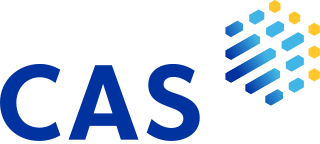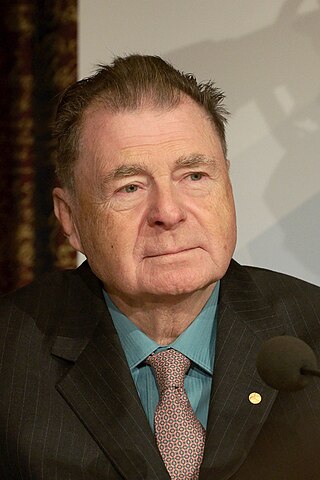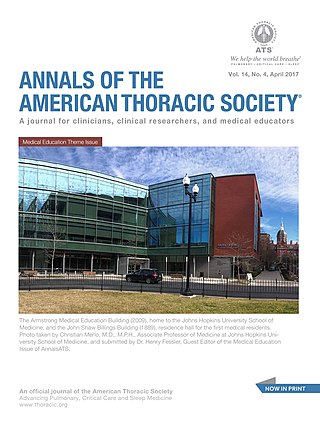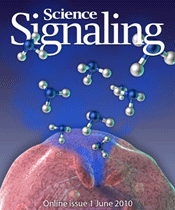
The American Chemical Society (ACS) is a scientific society based in the United States that supports scientific inquiry in the field of chemistry. Founded in 1876 at New York University, the ACS currently has more than 155,000 members at all degree levels and in all fields of chemistry, chemical engineering, and related fields. It is one of the world's largest scientific societies by membership. The ACS is a 501(c)(3) non-profit organization and holds a congressional charter under Title 36 of the United States Code. Its headquarters are located in Washington, D.C., and it has a large concentration of staff in Columbus, Ohio.

CAS is a division of the American Chemical Society. It is a source of chemical information. CAS is located in Columbus, Ohio, United States.

Synthetic biology (SynBio) is a multidisciplinary field of science that focuses on living systems and organisms, and it applies engineering principles to develop new biological parts, devices, and systems or to redesign existing systems found in nature.

Chemistry education is the study of teaching and learning chemistry. It is one subset of STEM education or discipline-based education research (DBER). Topics in chemistry education include understanding how students learn chemistry and determining the most efficient methods to teach chemistry. There is a constant need to improve chemistry curricula and learning outcomes based on findings of chemistry education research (CER). Chemistry education can be improved by changing teaching methods and providing appropriate training to chemistry instructors, within many modes, including classroom lectures, demonstrations, and laboratory activities.

Nature Chemical Biology is a monthly peer-reviewed scientific journal published by Nature Portfolio. It was established in June 2005 by founding Chief Editor Terry L. Sheppard as part of Nature Publishing Group. Sheppard was the Chief Editor of the journal 2004–2022.

Langmuir is a peer-reviewed scientific journal that was established in 1985 and is published by the American Chemical Society. It is the leading journal focusing on the science and application of systems and materials in which the interface dominates structure and function. Research areas covered include surface and colloid chemistry.

George McClelland Whitesides is an American chemist and professor of chemistry at Harvard University. He is best known for his work in the areas of nuclear magnetic resonance spectroscopy, organometallic chemistry, molecular self-assembly, soft lithography, microfabrication, microfluidics, and nanotechnology. A prolific author and patent holder who has received many awards, he received the highest Hirsch index rating of all living chemists in 2011.

ACS Chemical Biology is a monthly peer-reviewed scientific journal published since 2006 by the American Chemical Society. It covers research at the interface between chemistry and biology spanning all aspects of chemical biology. The founding editor-in-chief was Laura L. Kiessling. Chuan He began the role of editor-in-chief in January 2022. According to the Journal Citation Reports, the journal has a 2021 impact factor of 4.634.

The American Society for Biochemistry and Molecular Biology (ASBMB) is a learned society that was founded on December 26, 1906, at a meeting organized by John Jacob Abel. The roots of the society were in the American Physiological Society, which had been formed some 20 years earlier. ASBMB is the US member of the International Union of Biochemistry and Molecular Biology.
Huimin Zhao is the Steven L. Miller Chair Professor of Chemical and Biomolecular Engineering at the University of Illinois, Urbana-Champaign, as well as the leader of the Biosystems Design research theme in the Carl R. Woese Institute for Genomic Biology. His research focuses on directed evolution, metabolic engineering, bioinformatics and high throughput technologies.

Richard Frederick Heck was an American chemist noted for the discovery and development of the Heck reaction, which uses palladium to catalyze organic chemical reactions that couple aryl halides with alkenes. The analgesic naproxen is an example of a compound that is prepared industrially using the Heck reaction.

ACS Nano is a monthly, peer-reviewed, scientific journal, first published in August 2007 by the American Chemical Society. The current editor in chief is Xiaodong Chen. The journal publishes original research articles, reviews, perspectives, interviews with distinguished researchers, and views on the future of nanoscience and nanotechnology.

The Annals of the American Thoracic Society is an official medical journal of the American Thoracic Society (ATS). It publishes original clinical and epidemiological research in the fields of pulmonology, critical care medicine, and sleep medicine. Known colloquially as the "White Journal", the Annals of the American Thoracic Society is one of four journals published by the American Thoracic Society, along with the American Journal of Respiratory and Critical Care Medicine, American Journal of Respiratory Cell and Molecular Biology, and ATS Scholar.
Laura Lee Kiessling is an American chemist and the Novartis Professor of Chemistry at the Massachusetts Institute of Technology. Kiessling's research focuses on elucidating and exploiting interactions on the cell surface, especially those mediated by proteins binding to carbohydrates. Multivalent protein-carbohydrate interactions play roles in cell-cell recognition and signal transduction. Understanding and manipulating these interactions provides tools to study biological processes and design therapeutic treatments. Kiessling's interdisciplinary research combines organic synthesis, polymer chemistry, structural biology, and molecular and cell biology.

Science Signaling is a peer-reviewed scientific journal that is focused on cell signaling and regulation. It is published weekly by the American Association for the Advancement of Science (AAAS). The editor-in-chief is Michael B. Yaffe, and the journal is part of the Science Family of Journals of which Holden Thorp is the Editor-in-Chief.

ACS Catalysis is a monthly peer-reviewed scientific journal established in 2011 by the American Chemical Society. The journal covers research on all aspects of heterogeneous, homogeneous, and biocatalysis. The editor-in-chief is Cathleen Crudden, who assumed the position in early 2021. The journal received the Association of American Publishers’ PROSE Award for "Best New Journal in Science, Technology & Medicine" in 2013.

ACS Macro Letters is a peer-reviewed scientific journal published by the American Chemical Society. As of 2017, ACS Macro Letters has the highest impact factor of any journal in the field of polymer science (6.131). With the launch of ACS Macro Letters, all Communications to the Editor that were formerly published in Macromolecules will be published as Letters in ACS Macro Letters. Researchers are advised turn to ACS Macro Letters for reports of early, urgent results in polymer science and to Macromolecules for more detailed discussions of comprehensive research findings.

ACS Photonics is a monthly, peer-reviewed, scientific journal, first published in January 2014 by the American Chemical Society. The current editor in chief is Romain Quidant. The interdisciplinary journal publishes original research articles, letters, comments, reviews and perspectives.
Environmental Science & Technology Letters is an online-only peer-reviewed scientific journal publishing brief research reports in the fields of environmental science and technology. It was first opened to submissions in 2013, with its first articles published online in January 2014. It was established by the American Chemical Society to serve as a sister journal to their existing journal, Environmental Science & Technology, with an expedited time to publication. To this end, the journal publishes all articles as soon as publishable after acceptance, though they are also summarized in monthly issues. The editor-in-chief is Prof. Bryan Brooks. According to the Journal Citation Reports, the journal has a 2019 impact factor of 7.678.
Kristala Jones Prather is an American professor of Chemical Engineering at the Massachusetts Institute of Technology. Her research is focused on using novel bioprocesses to design recombinant microorganisms to produce small molecules.















